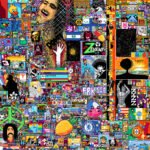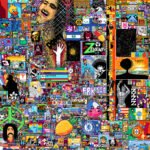
Julian Trevelyan (born February 20, 1910, Dorking, Surrey, England—died July 12, 1988, London) was a British artist who was a founding member of the British Surrealist group in the 1930s. He often infused his work with a sense of humour and fantasy.
Trevelyan was the nephew of the historian G.M. Trevelyan. While attending the University of Cambridge (1928–30), Trevelyan became so interested in the dreamlike imagery of French Surrealism that he moved to Paris, where he studied at Stanley William Hayter’s printmaking workshop, Atelier 17, from 1931 to 1934. There, he met a number of important avant-garde artists, including the Surrealists Joan Miró and Max Ernst; he also befriended the American sculptor Alexander Calder. In his early work Trevelyan sometimes wrote descriptions of dreams—the favourite subject of Surrealists—along the margins of his compositions. Trevelyan exhibited his paintings and collages in a one-man show in London in 1935, and the next year he participated in the London International Surrealist Exhibition.
Throughout his career, Trevelyan experimented with styles that varied from Surrealism to realism to abstraction. He continued to be a prolific printmaker, often creating lyrical, whimsical etchings. After serving as a camouflage officer during World War II, Trevelyan taught art history and etching at the Chelsea School of Art (1950–55) and printmaking at the Royal College of Art (1955–63). He wrote several books, including an autobiography, Indigo Days (1957).

Britannica Quiz
Can You Match These Lesser-Known Paintings to Their Artists?











